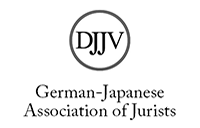Strict Liability and State Indemnification under Japanese Law. The New Space Activities Act Compared with the Scheme on Compensation for Nuclear Damages
Abstract
In November 2016, the Japanese Diet approved the Space Activities Act. In addition to the regulation of space activities by private (non-governmental) entities through licensing, it has introduced strict liability for surface damage caused by private space activities and also state indemnification in cases where the amount of surface damage exceeds the insured amount. The latter aspect of the Space Activities Act constitutes a special rule of tort law, one which deviates from the fault-based general tort law in the Civil Code.
There are not many statutes embodying strict liability in Japan. Still less common are state indemnification laws. A close examinations reveals that even among the exceptional strict liability statutes, there is a considerable degree of variety with respect to (i) the scope of damage for which strict liability is applicable, (ii) the exemption of otherwise liable parties, (iii) contribution of the victim or a third party to the occurrence of damage, and (iv) the channeling of liability. Each statute, including the most recent Space Activities Act, adopts rules suitable to the respective substantive background.
With regard to state indemnification, the Space Activities Act is remarkably generous when compared to the Law on Compensation for Nuclear Damages. While the latter law refers to mere “assistance” by the government when the amount of damages exceeds the insured amount, a standard which is now plaguing TEPCO after the Fukushima Daiichi incident of 2011, the Space Activities Act explicitly provides for indemnification by the government so as to relieve the launch operator, de facto, from the risk of actual disbursement. However peculiar it may appear, it can be reasonably justified when one looks at the domestic legislations of other spacefaring states, in particular the United States and France. In other words, states are running a race of regulatory competition to support their commercial launch operators through financial indemnification.
The existence of such regulatory competition may explain another feature of the Space Activities Act, namely the strong political leadership which has been exhibited. The Act is not alone in this respect: strong political leadership has also been observed in other subjects of regulatory competition, such as corporate governance reform.






